Bravery and masculinity - these two words come to mind about Piłsudski's legionnaires. Meanwhile, the war for independence was by no means a man's affair. From under more than one matzeva there was a braid or a curl, and their owners showed off on the battlefield no worse than the soldiers.
Let's start with the fact that Polish women during the partitions conspired in full force. They were couriers, observers and activists.
Young girls underwent shooting courses and sanitary training, old ladies collected money for the fight. After the outbreak of the war, women initially agreed to work in the supply, sanitary services, distribution and courier units. Ladies from the Polish Military Organization (POW), however, finally declared a revolt. They demanded military training and preparations for the fight for independence, arms in hand. As Witold Sienkiewicz writes, many shooters dreamed of being on the front line ("Fighting and lyrical. Piłsudski's Legions"). Some of them, without waiting for decisions in advance, started fighting in their own way.
For the lancers with the uniform ... will you follow the rope?
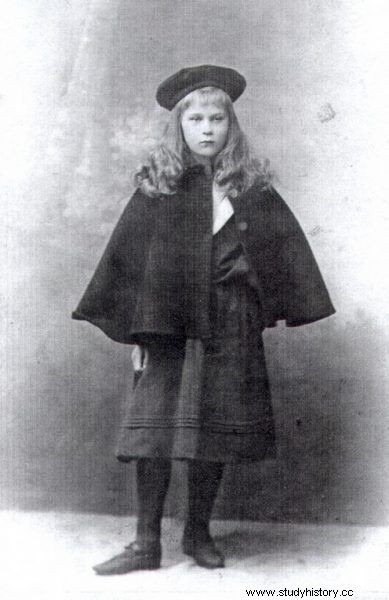
Professor Zofia Kamińska had a stubborn face painted on from her childhood. As she decided to become a lancer, she did so.
Uhlans, uhlans, painted children, many young ladies will follow you. How do these words relate to Zygmunt Tarło's uhlan? The answer is nothing. Because the uhlan Zygmunt Tarło, who is flexing in the saddle, with his head on his head, is in fact professor Zofia Kamińska. Artist and dyed, I mean ... a uniformed fox in the ranks of the 1st Brigade.
Respected professor Kamiński, concerned about the prolonged lack of correspondence from his wife, sets off from Warsaw to his estate, where he does not find her. After carefully questioning his sister-in-law, it turns out that the professor in disguise joined the 2nd Legion Brigade and went to the front to fight for Poland.
Before that could happen, however, she had to get her gear ready. She ordered a uniform made of decent cloth from a tailor who, well paid, did not ask unnecessary questions. Cavalry boots were also obtained without any problems, as well as underwear. It was worse with a beautiful chak and the right hairstyle.
Kamińska's boyish appearance was obtained in two attempts . The first time a barber's heart was breaking at the thought of cutting beautiful blonde curls. After the second, it was radically - a razor against the skin. Prepared in this way, Zofia reported to the recruiting officer for documents and went to the war.
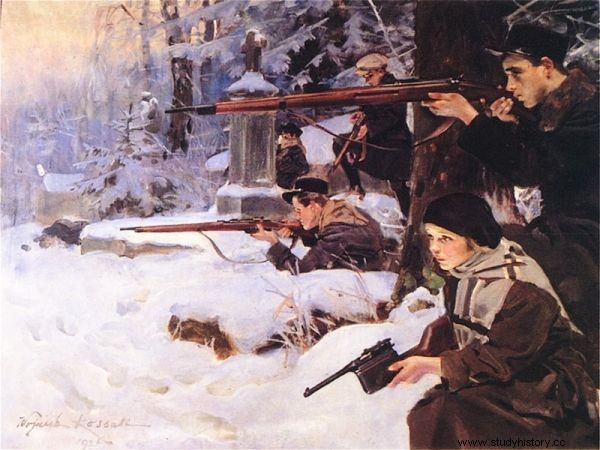
In 1918, girls from Lviv fought like soldiers and did not yield to their friends in courage.
While serving in the platoon of staff cavalry, Zofia Kamińska, known here as the uhlan Zygmunt Tarło, endured all inconveniences without opposition. Hunger, cold, thirst and the ubiquitous corpses do not diminish her enthusiasm. On the other hand, the professor continues his efforts to remove Zofia from the army. The woman fights bravely and shares all her worries with her colleagues in the detachment until she is caught by the punishing hand of military orders. A longing and worried husband exposes Kamińska, who until now believed that since Kamiński is too sick to fight, it is her duty to replace him. The commander receives a letter informing that Tarło is not him, but her and ordering the immediate release of the rebellious professor, who becomes his wife again.
Student with a revolver
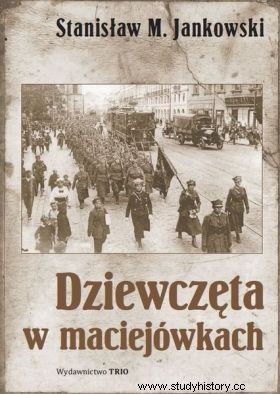
Helena Bujwidówna graduated from high school and started her studies, but in November 1918 she was not able to sit in the university halls. Instead, she put on an oversized military coat and, with a weapon in her hand, set off to fight for the Polishness of Lviv.
On November 1, Bujwidówna volunteers to give her life in battle. Meanwhile, cruel words greet her: We have no weapons for women . The commander, Bolesław Bujalski, orders her to set up a sanitary facility. Thirsty for linear combat, Helena decides to get a gun herself and grabs the rifle from the Ukrainian guard.
Faced with such arguments, Bujalski has to surrender and accept her into the unit. The girl is on guard duty.

... however, it was inspired by the novel by Wojciech Lubawski and Tomasz Natkańc "Małgorzata goes to war" (Znak 2014).
In my “civilian”, not very warm clothes, I stayed 12 hours in an orchard, my teeth chattering from the cold, clutching the carabiner in my hand. I cannot say that these 12 hours were the most enjoyable in my life. (quoted after:S. M. Jankowski, "Girls in maciejówkach", Warsaw 2012)
There is no reduced fare for it. Like the rest of his colleagues from the detachment, he is attacking Ukrainian positions. Under the whistling hail of bullets, he carries reports and carries food rations. He does not shy away from dangerous expeditions and hand-to-hand combat (he loses two teeth after being hit by the butt of the Ukrainian rifle). Bujwidówna is doing so bravely that praise for her even goes to the commander's report. She fought to the end, waiting for Polish troops to march through the streets of Lviv after the withdrawal of the Ukrainians and, among others, with the awards of the Silver Cross of the Virtuti Militari Order of the 5th class. And after the war? As a volunteer, she set out to help the participants of the Third Silesian Uprising.
This article has more than one page. Please select another one below to continue reading.Attention! You are not on the first page of the article. If you want to read from the beginning click here.
Volunteer Leszek Pomianowski
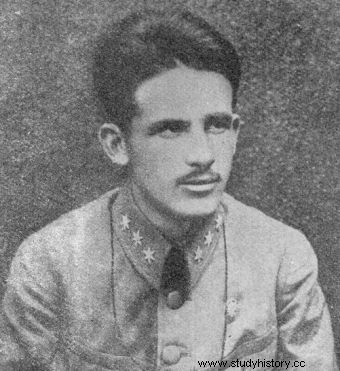
Captain Stanisław Sław-Zwierzyński (pictured) did not know what he was doing, saying "I invite you to my battalion".
My father fought in 1863, one grandfather died on white bears, the other in 1831 fought in the woods, and my great-grandfather walked under Napoleon. No wonder that little Zosia Plewińska saw herself in the Polish uniform from an early age. Although she was a scout herself, she learned military regulations, drill and field studies, after the outbreak of World War I the road to soldiers was closed to her. The impossible became possible when, while working as a nurse in a hospital, she met Captain Stanisław Sław-Zwierzyński. As S. M. Jankowski writes, the officer quickly regretted what he had said: If a citizen wants to die, I invite you to my battalion. What was supposed to scare Zofia only encouraged her. And since the word had been said, in January 1915 a volunteer Leszek Pomianowski (Miss Plewińska) reported to the 4th Battalion of the 1st Brigade.
The "Pomianowski" liaison officer makes up for any shortcomings very quickly with his extraordinary determination. He learns how to deal with a stubborn horse, military drill and other useful skills. He even wins the competition signaling exam, thanks to which he will be promoted to the commander of signaling patrols. However, she is losing her sleep by the rumor that all women will be removed from the ranks of the Legions (she herself knows about at least a few servants in other divisions). Luckily for Zofia, it turns out to be untrue. Nevertheless, the regulations do not provide for female service in line units.
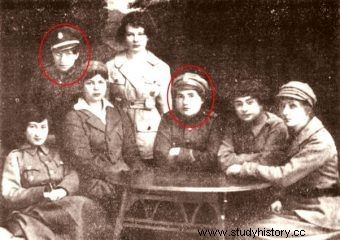
The unbreakable medical duo Zdziarska (in the circle on the right) and Grodzińska (in the circle on the left).
Meanwhile, the volunteer "Pomianowski" takes part in the fight on an equal footing with others, he sleeps on the threshing floor, wades through the mud and carries heavy equipment. In late spring, she begins to fall ill, which finally forces her to say goodbye to the soldier's life. Treatment in the mountains does not help. Zofia Plewińska will never wear her beloved uniform again.
Nurses, plague virgins
The nurses from Zdziarska and Grodzińska are able to get to the front without problems. They do not give up and end up in line troops. It is true that the nurses in the army are no news, but the commanders look askance at the women tangling under the fire. They will start complaining that the soldiers have to wash and wash their underwear!

Maria Zdziarska and Natalia (Nata) Grodzińska serve bravely in the 4th Infantry Regiment. Whose medical supplies are not included in the supply, they themselves buy with their own money. They're setting up a decent infirmary. They sleep together, eat together, and they also rush out to the foreground together to drag the wounded away.
Miss Zdziarska and Grodzińska are also together when the 4th Infantry Regiment welcomes the almost barrageous fire of the Bolsheviks near the village of Łosko. The soldiers fall to the ground automatically and, oblivious to their orders, they refuse to move. When an officer tries to figure out a way to break their poignant fear, Nurse Nata takes matters into her own hands. He grabs a gnarled stick and runs between the spheres. To everyone flattened to the ground, if he does not bang his stick on the cross to sober up! The soldiers shake themselves off, move to enemy positions and win.
Zdziarska is no less brave, but she is unpleasantly disappointed. In the order No. 108 from Radoszkowicz, dated July 30, 1919, the company in which he serves is commended by the order of the 2nd Legions division. The order mentions that Officer Cadet Redlich broke into Kurzeniec first, with the help of, among others, senior medic Zdziarski. So what if:

... but the inspiration for its writing was the novel by Wojciech Lubawski and Tomasz Natkańc "Małgorzata goes to war" (Znak 2014).
Senior paramedic Zdziarski [...] is none other than Zdziarska Maria, a medic who wrote these words, who never dressed like a man and never changed the ending of her surname. So why was this blanket changed in the official order, blurring the fact that women were also able to deserve military praise when it came to defending their own country? (quoted after:S. M. Jankowski, "Girls ...")
And they could. And today, on Women's Day, it is worth remembering!
Sources:
- J. Dufrat, In the service of the camp of Marshal Józef Piłsudski. Women's Civic Labor Union (1928–1939), Krakow 2013
- S. Jankowski, Girls in maciejówkach , Warsaw 2012.
- W. Sienkiewicz, Fighting and lyrical. Piłsudski's Legions , Warsaw 2010.
